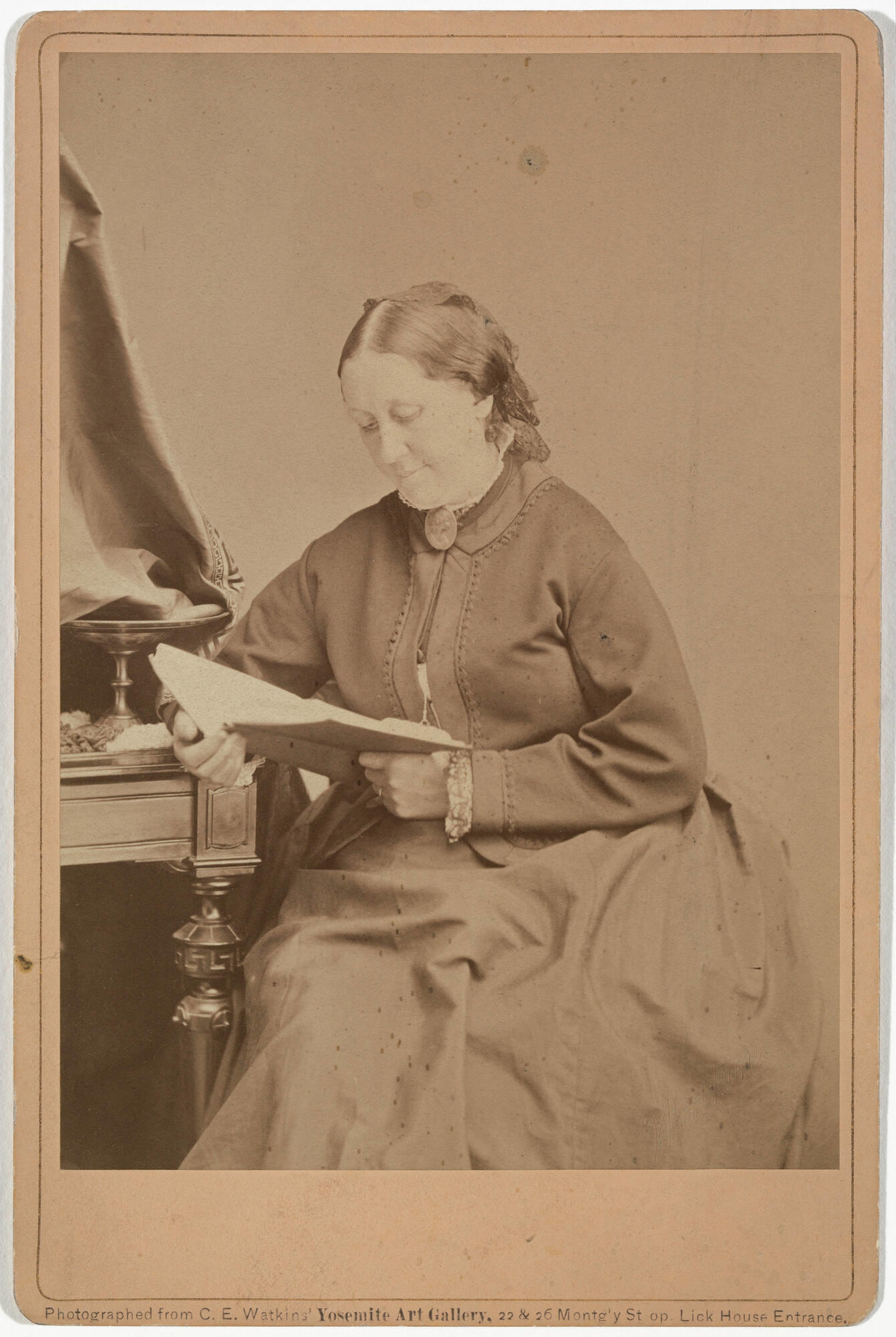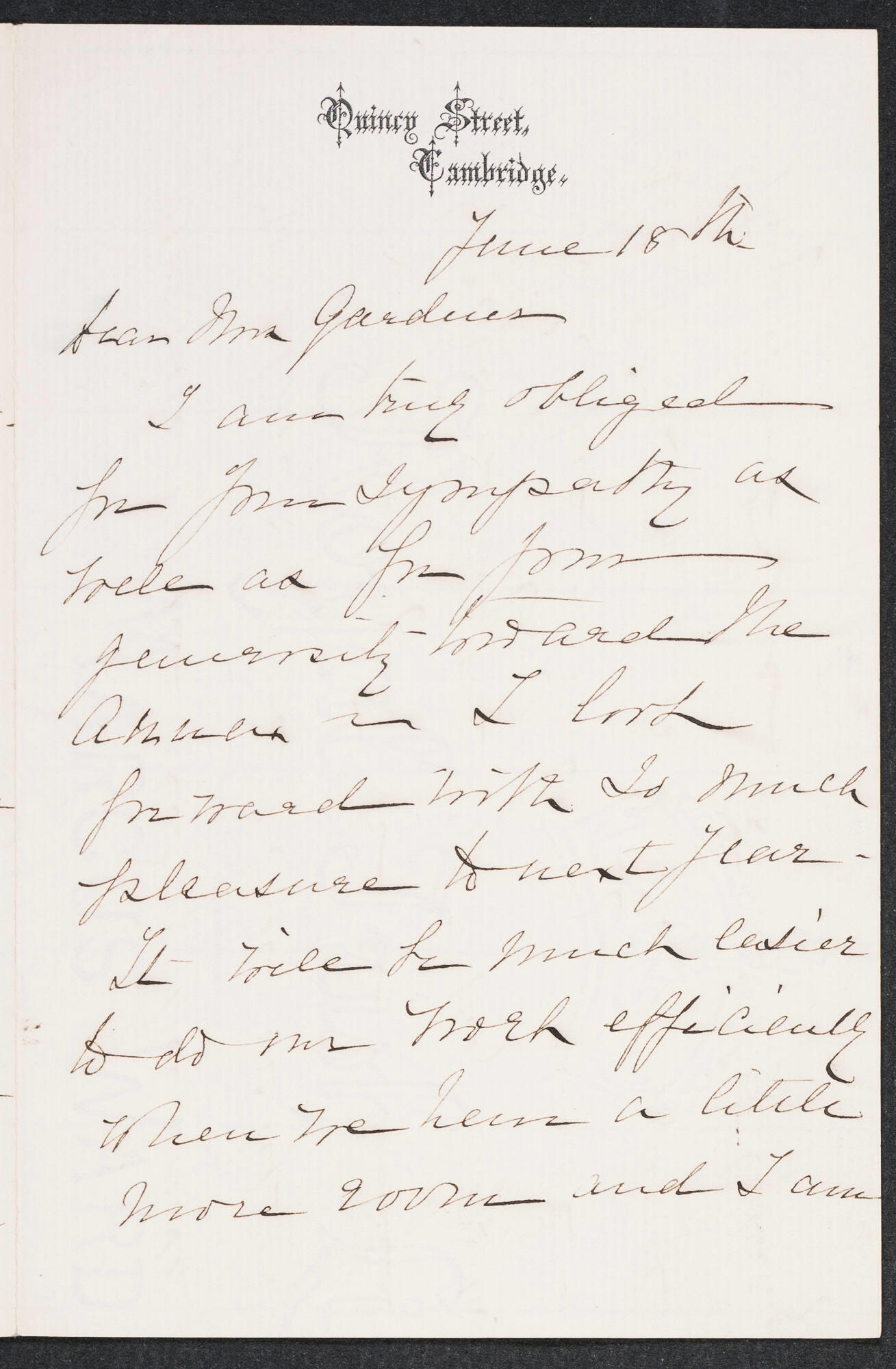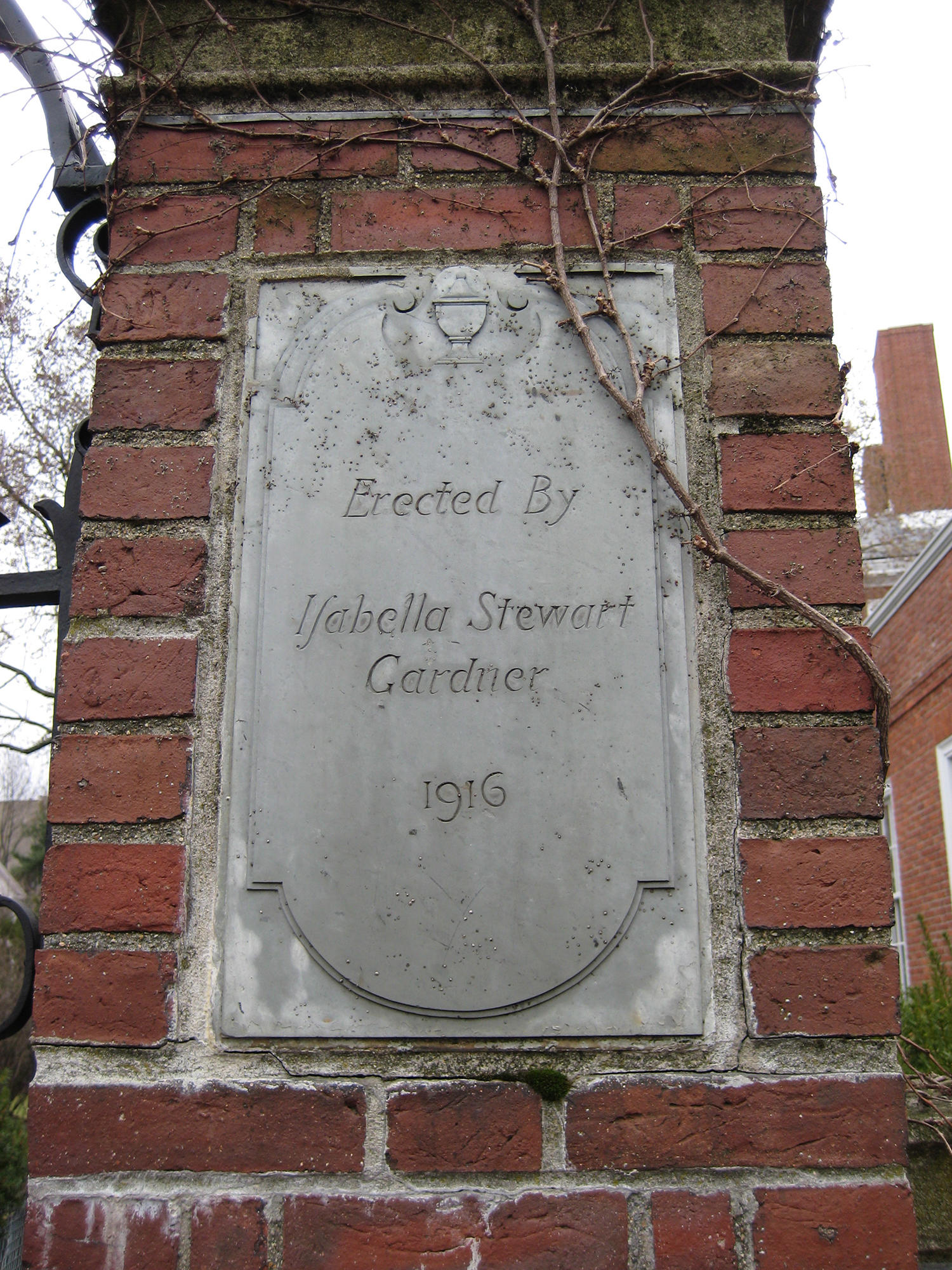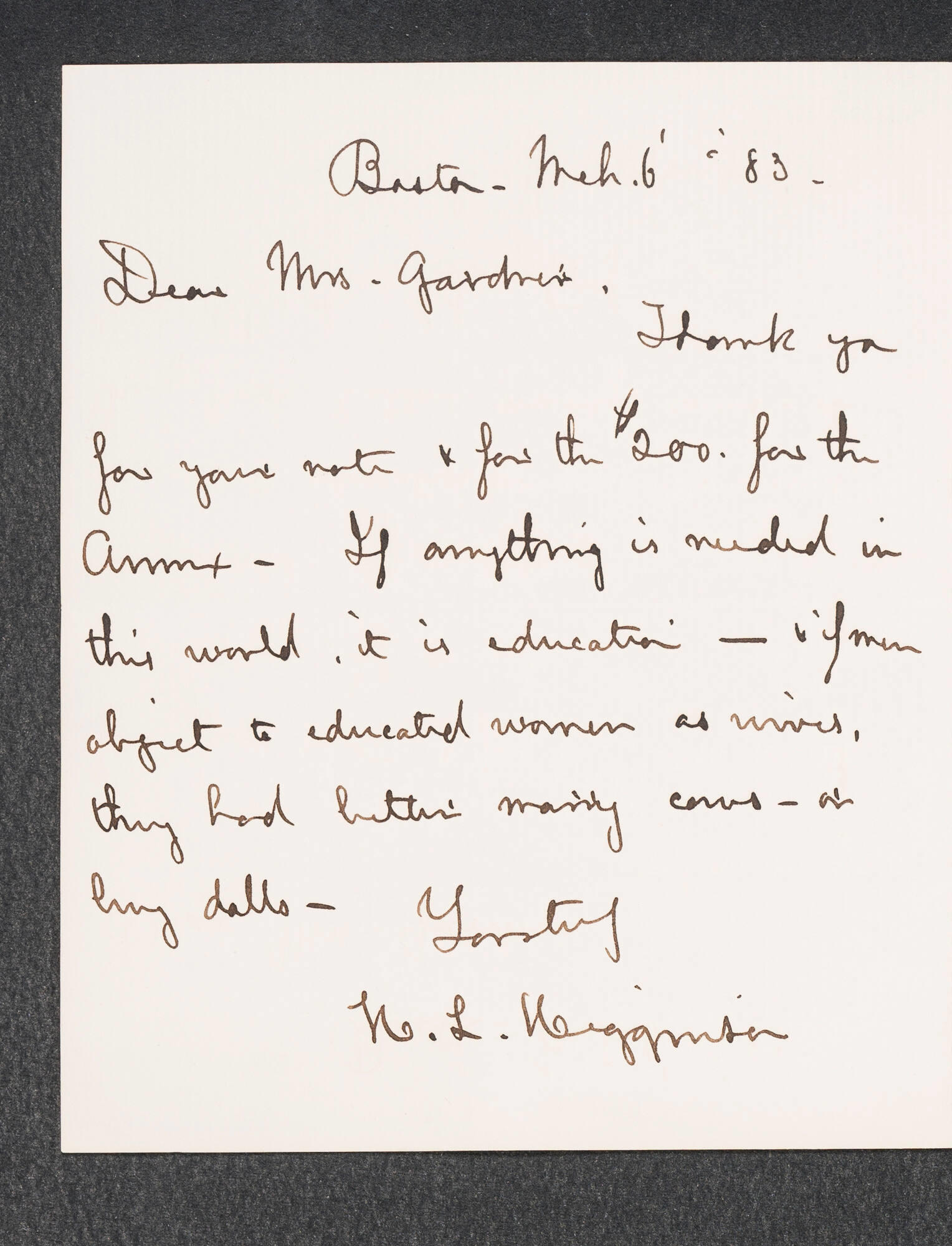According to the Boston Globe, there are more than 138,000 undergraduate and graduate students enrolled in Boston-area universities. As the city finishes welcoming back its student population, it’s fitting to explore Isabella Stewart Gardner’s relationship with an institution of higher education: Radcliffe College, the former women’s college of Harvard University.

Radcliffe College Class of 1923
Digital Commonwealth, Historical Society of Old Yarmouth. Creative Commons Attribution Non-Commercial No Derivatives License (CC BY-NC-ND).
The museum archives indicate that Isabella donated to women’s education at Harvard as early as 1883—the same year that she herself took classes with the Harvard professor Charlies Eliot Norton. She supported this cause throughout her life.

Carleton E. Watkins (American, 1829–1916), Elizabeth Cabot Cary Agassiz, about 1880. Albumen print on card
Isabella Stewart Gardner Museum, Boston (ARC.007503). Isabella kept this photograph in the Vatichino, her personal treasure trove.
Several letters in the Museum’s collection, along with a carte de visite photograph, reveal that Isabella was friends with Elizabeth Cabot Cary Agassiz, a scholar and pioneer of women’s education in the United States. Agassiz was essential in transforming women’s education at Harvard, which started with professors providing private instruction for ladies through what was called the “Harvard Annex.” (It was likely through the Annex that Isabella could take classes with Norton.) Through her fundraising efforts and advocacy, Agassiz contributed to transforming this informal continuing education program into a formal and permanent college. As her letters to Gardner indicate, Isabella was one of the people whom she recruited to give to the cause: “I am truly obliged for your…generosity toward the Annex.”

Elizabeth Cabot Cary Agassiz (American, 1822–1907), Letter to Isabella Stewart Gardner from Cambridge, Massachusetts, late 19th century. Ink on paper
Isabella Stewart Gardner Museum, Boston (ARC.000044)
Radcliffe was officially chartered in 1894, and Isabella's generosity towards the institution continued—and is still honored today, even though Radcliffe no longer exists. While the specifics are slightly complicated, Radcliffe began to be absorbed into a newly co-ed Harvard College in 1977. Today, the former Radcliffe campus serves as the site of the Radcliffe Institute for Advanced Studies at Harvard University. Keen observers visiting the campus today can see a simple plaque on one of the brick pillars framing wrought iron entry gates. Reading "Erected by Isabella Stewart Gardner 1916," the plaque commemorates Isabella’s generosity.

According to an annual report from 1915, Gardner helped fund the gate and the adjacent wall in honor of Agnes Irwin, the first Dean of Radcliffe. True to form, Isabella not only donated to the cause of women’s education—she made a garden design suggestion. The annual report states: “The wall is to be planted with vines, euonymus, and ampelopsis…The scheme of the wall and plantings was suggested by Mrs. John L. Gardner to whom the [fundraising] committee feel immensely indebted.”

Henry Lee Higginson (American, 1834–1919), Letter to Isabella Stewart Gardner from Boston, 6 March 1883. Ink on paper
Isabella Stewart Gardner Museum, Boston (ARC.001775). Isabella displayed Henry Lee Higginson letters in the Berenson Case in the Blue Room.
Isabella left no records to indicate why she chose to support Radcliffe through the years. One motivation may have been that her own studies with Norton in the 1880s inspired first her love of Dante and rare books, and later her passion for art history. Another motive could have been that she shared the opinions of Henry Lee Higginson, who sent Gardner a thank you note for her donation of $200 in 1883 to the “Annex.” He wrote: “If anything is needed in this world, it is education—if men object to educated women as wives, they had better marry cows or big dolls.”
Though we may never truly know the exact reasons behind Isabella's support of Radcliffe throughout her life, her impact on women's continuing education is still felt in Boston today as thousands of female college students return to classes.
You May Also Like

Read More on the Blog
Julia Ward Howe: BFF and Suffragette

Explore the Museum
The Fifteen Cases

Read More on the Blog
Trailblazer: Blanche E. Colman